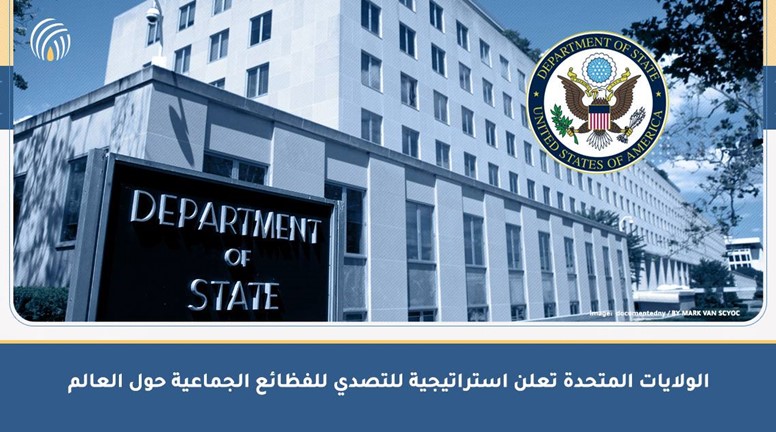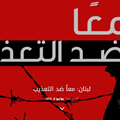2022 United States Strategy to Anticipate, Prevent, and Respond to Atrocities
To read the report in Arabic
EXECUTIVE SUMMARY
President Biden has affirmed that atrocity prevention and the promotion of respect for human rights are central to U.S. national security, stating, “I recommit to the simple truth that preventing future genocides remains both our moral duty and a matter of national and global importance…. When hatred goes unchecked, and when the checks and balances in government and society that protect fundamental freedoms are lost, violence and mass atrocities can result.” Atrocities inflict long-term trauma and destroy lives and communities. Atrocities may violate international human rights law, contribute to widespread displacement, regional and international instability, and economic disruption, and threaten U.S. and partner nations’ security and interests. As set forth in Executive Order 13729, A Comprehensive Approach to Atrocity Prevention and Response, which remains in effect, “preventing mass atrocities and genocide is a core national security interest and a core moral responsibility of the United States.”
The Elie Wiesel Genocide and Atrocities Prevention Act of 2018 (P.L. 115-441) (the Elie Wiesel Act) states that atrocity prevention is in the U.S. national interest, and calls for the United States to pursue a “government-wide strategy to identify, prevent, and respond to the risk of atrocities.” The three goals laid out in this strategy support the following envisioned end state:
The U.S. Government takes timely and effective action to anticipate, prevent, and respond to atrocities, in coordination with partner governments, and international, civil society, and local partners. The White House-led Atrocity Prevention Task Force (Task Force) coordinates these efforts.
I. STRATEGIC CHALLENGE
For decades, the United States has worked at home and abroad to strengthen governmental capacity to respect, promote, and safeguard human rights and promote peace – including through efforts to prevent atrocities. Yet more action is needed. Despite international pledges of “Never Again” following the Holocaust, genocide, crimes against humanity, ethnic cleansing, and war crimes continue to occur globally. The U.S. Holocaust Memorial Museum reported 20 ongoing mass killings as of September 2020, perpetrated by 10 states and 10 non-state groups, in 15 countries. The costs associated with atrocity response far outweigh investments in early prevention. Atrocity prevention saves lives and – given the high cost of response and recovery efforts – U.S. resources. Therefore, it is in the United States’ strategic interest to prioritize resources for prevention activities, while necessarily responding to and assisting in recovery from atrocities.
II. STRATEGIC APPROACH AND GOALS FOR CONCRETE ACTION
This Strategy outlines how the Task Force, an Interagency Policy Committee (IPC), will coordinate concrete action through a whole-of-government approach to prevent, respond to, and recover from atrocities. The Task Force will support country-specific and regional policy processes and feed into a higher-level Prevention and Stabilization Steering Committee, which will coordinate the implementation of the Elie Wiesel Act. The Task Force will seek bilateral, multilateral, and civil society partnerships to advance atrocity prevention, response, and recovery.
The Task Force prioritizes early identification and prevention of atrocities in countries most at risk for atrocities, as determined by the Task Force on at least an annual basis. In cases of ongoing atrocities, the Task Force supports regional policy processes in developing and monitoring targeted response options and adjusting course as needed. In the aftermath of atrocities, the Task Force supports regional policy processes by recommending and monitoring recovery efforts to address the legacies of human rights abuses, pursue accountability, justice, and redress and help prevent recurrence.
Goals & Objectives of the Strategy
The following goals and objectives align atrocity efforts with the prevention architecture articulated in the U.S. Strategy to Prevent Conflict and Promote Stability, released in December 2020 pursuant to the Global Fragility Act (GFA).
A. Goal 1: Atrocity Prevention, Response, and Recovery – Pursue Early Action and Locally Driven Solutions in Priority Countries
The Task Force aims to achieve impact through concerted action in countries at risk of atrocities. To do this, the Task Force will use quantitative and qualitative assessments, drawing upon input from civil society, to identify priority countries for atrocity prevention efforts, including addressing conflict-related sexual violence.
Priority Actions:
On an annual basis, at minimum, identify up to the top 30 Task Force priority countries most at risk for atrocities, which may include countries in any phase of atrocities – prevention, response, recovery, or combination thereof.
From those up to top 30 priority countries, develop a short list for Task Force intensive focus in coordination with regional counterparts. Utilizing relevant quantitative and qualitative civil society and intelligence reporting as well as the 2021 U.S. Government Atrocity Assessment Framework, the Task Force will conduct assessments of risk factors and pathways to atrocities in these priority countries.
Assess current efforts, including gaps inhibiting sufficient action, and available tools to mitigate atrocity risks.
In coordination with country-specific or regional policy processes, develop targeted response plans for priority countries.
As new atrocity crises emerge or are anticipated, coordinate a whole-of-government response co-led with NSC regional directorates.
Support and ensure U.S. Government entities, including U.S. missions abroad, adjust and update Integrated Country Strategies, Country Development Cooperation Strategies, defense cooperation programs and agreements; program design, implementation, monitoring and evaluation; and/or relevant country or regional strategy documents and processes to reflect atrocity risk assessments analysis and recommendations.
Assess progress on implementation of atrocity prevention and response actions, and work with regional policy processes to adjust course, as needed.
Utilize reflective learning and conduct evaluations of atrocity prevention initiatives to build the atrocity prevention body of knowledge, identify effective tactics, and adapt interventions, as needed.
B. Goal 2: Partnerships – Promote International Cooperation, Civil Society Engagement, and Strategic Public Messaging
The Task Force will strive for consultative, coordinated, and transparent activities to prevent, respond to, and foster recovery from atrocities – including strategic public messaging. The U.S. Government will invite collaboration with a wide range of stakeholders including UN agencies, regional organizations, partner governments, local populations, and civil society and related consortia.
Priority Actions:
Promote data collection and information sharing on early warning, escalating risk, human rights violations and abuses, perpetrators, and ongoing atrocities; Task Force efforts; and lessons learned and best practices, including on atrocity prevention tools and training approaches with like-minded partners, international and civil society organizations, and Congress.
Consult with civil society organizations and partner governments on the development of atrocity assessments and response plans.
Explore coordinated joint actions to prevent and respond to atrocities with like-minded international partners such as through the International Atrocity Prevention Working Group (IAPWG).
Identify and monitor indicators of risk to evaluate interventions on an ongoing basis, and where possible in priority countries.
Establish country coordination groups with donors or other in-country partners.
Pursue a strategic communications plan to amplify messages about countries of concern, atrocity perpetrators or facilitators, and Task Force efforts through social media, public remarks, and events.
To read the full report, click here





